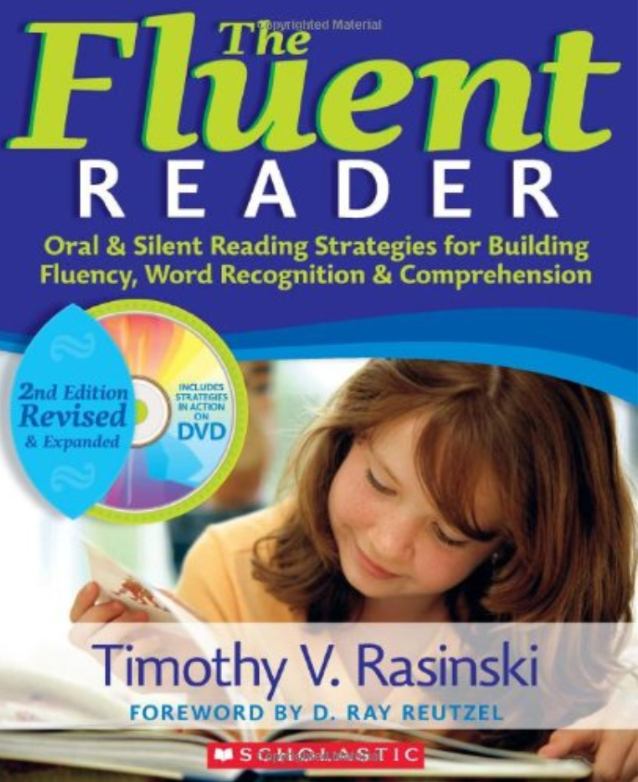Picked up a good book lately? Well, my shelves are literally busting with school-related books and I just organized them into categories. During my organizational frenzy, I came across Tim Rasinki’s book The Fluent Reader. I read this book cover to cover over spring break one year and absolutely loved it! I reopened the book once again, shook out some sand and read a few chapters. Here’s a little snippet from the book.
According to Rasinski, “reading fluency refers to the ability of readers to read quickly, effortlessly, and efficiently with good, meaningful expression.” Fluent readers are able to recognize many words by sight and, when coming upon an unknown word, able to decode the word quickly. Because good readers read accurately and effortlessly, their mental energy can be devoted to figuring out the meaning of the text (comprehension) rather than trying to figure out the words. Dr. Rasinski outlines four ways to build reading fluency.
1. Model Good Oral Reading. Reading to students in a natural manner models fluent reading. Model and encourage students to pay attention to phrasing, expression, and pacing. Too much emphasis on “word-perfect decoding sends a message that good reading is nothing more than accurate word recognition.”
2. Provide Oral Support for Readers. Research has shown that when a reader reads and hears simultaneously a fluent reader read the same text, reading fluency and comprehension improves (Topping, 1995). There are several different ways to accomplish this: choral reading, paired reading and using recorded readings. The book describes how to use these strategies and the research behind them in more detail.
3. Offer Plenty of Practice Opportunities. As with learning any skill, such as learning to play piano or riding a bike, time practicing the skill is crucial. To become a good reader, readers need practice reading. The repeated reading strategy has been found to lead to significant increases in students’ fluency. In our districts, we utilize the Read Naturally computer based program as one way to offer this strategy. Students begin with a “cold” read of the text, a words correct per minute (wcpm) score is provided, students practice reading the text with and without a recording and when they feel they can read it fluently, they then do a “hot” read. The computer program tracks their progress on each read. I love this program, and certainly did not do it justice with that short explanation. I’ll devote a blog on the program at a later date.
4. Encourage Fluency through Paraphrasing. Students need to learn to chunk text into phrases to help determine meaning. Meaning lies in a text’s phrases and not just in its individual words. Disfluent readers tend read word-by-word rather than chunk text into meaningful phrases. Teaching students to pay attention to punctuation helps.
For more information on developing fluent readers, be sure to check out Tim Rasinki’s book.





Leave a Reply